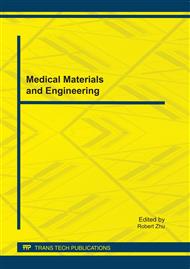p.200
p.206
p.210
p.220
p.229
p.235
p.238
p.244
p.248
Study on the Property Change of Processed Rhizoma Coptidis Based on 5-HT Level and Brain Tissues Morphology of Rats
Abstract:
All Chinese medicinal substances have a special property (cold, hot, warm or cool) according to the theories of Traditional Chinese Medicine (TCM). Processing of Chinese Materia Medica ( pao zhi ) is always applied to modify the property according to clinical needs in TCM. The purpose of this paper was to evaluate the processing effects on the property of Rhizoma Coptidis (RC). The wine-processed RC (WPRC, with less cold property in TCM) and bile-processed RC (BPRC, with colder property in TCM) were prepared, the level of 5-hydroxytryptamine (5-HT) of rats was determined by fluorescence spectrophotometry and the morphology of rats’ brain tissue was analyzed by immunohistochemistry. Compared to crude RC treated group, the distribution of 5-HT-immunopositive neurons and cell staining in the brainstem raphe nuclei were remarkably denser and deeper in BPRC treated group, while the distribution of 5-HT-immunopositive neurons was sparse and the cell staining was lighter in WPRC group. The work provided a meaningful way in the research of processing effect on properties of Chinese medicinal substances.
Info:
Periodical:
Pages:
229-234
Citation:
Online since:
November 2011
Authors:
Keywords:
Price:
Сopyright:
© 2012 Trans Tech Publications Ltd. All Rights Reserved
Share:
Citation:


